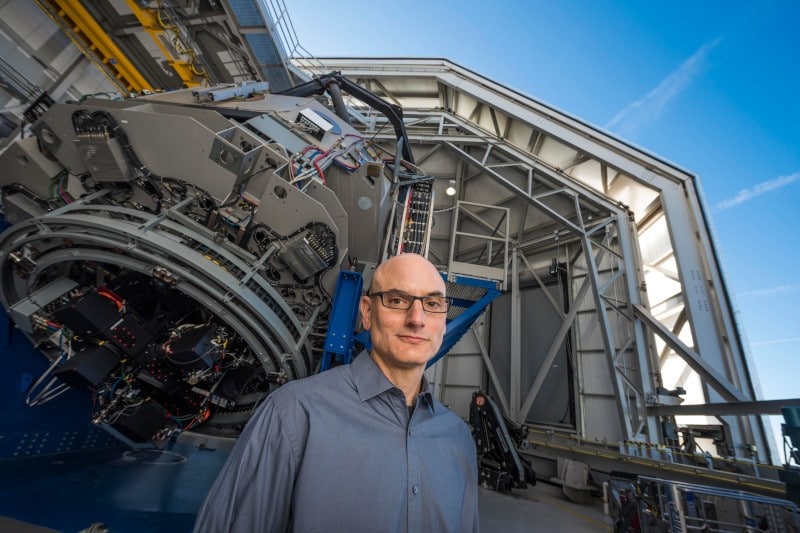NASA’s Spitzer Space Telescope, designed to study the early universe in infrared light, was the first telescope to see light from a planet outside our solar system. Launched in 2003, Spitzer contained infrared detectors of unprecedented sensitivity, providing astronomers a never-before-possible look at the universe.
Spitzer made important discoveries about comets, stars, exoplanets and distant galaxies. Decommissioned earlier this year—11 years beyond its prime mission—the telescope has left a lasting legacy of solar system science.
A team of more than a dozen scientists from the U.S. and Europe collaborated on two review papers published in the journal Nature Astronomy inventorying the major discoveries made possible by the Spitzer Space Telescope.
David Trilling, professor in Northern Arizona University’s Department of Astronomy and Planetary Science, is the lead author of “Spitzer’s Solar System studies of asteroids, planets and the zodiacal cloud,” co-authored by NAU associate professor Joshua Emery. Both scientists co-authored “Spitzer’s Solar System studies of comets, centaurs and Kuiper belt objects.”
Trilling used the Spitzer Space Telescope from soon after its launch in 2003 through the end of its mission in 2020. While most of his projects with the telescope during that time focused on the study of near-Earth
asteroids, he also carried out studies of distant objects in our solar system such as interstellar objects and planetary systems around other stars.
“In its 16 years of scientific measurements,” Trilling said, “the Spitzer Space Telescope performed a number of groundbreaking and key infrared measurements of solar system objects near and far. Many of these observations provide critical foundations for future infrared space-based observations. Spitzer’s tools could be easily applied to a wide range of scientific investigations, making it a very powerful asset.”
“Spitzer was sensitive to infrared radiation, as opposed to visible light,” he said. “In many ways, Spitzer provided a view of the universe and of planetary bodies in our solar system that scientists had never seen before. This technological revolution produced new insights into the formation and evolution of our solar system.”
The papers also provide guidance on where the next generation of explorers should point NASA’s James Webb Space Telescope (JWST). The much-delayed JWST, now scheduled to launch in October 2021, is expected to build on the extensive results provided by Spitzer, including taking the next step in our study of the solar system. Trilling is looking forward to using the new telescope for his research.
“JWST is going to be a phenomenal facility,” Trilling said. “As Spitzer did almost 20 years ago, JWST is going to revolutionize our understanding of the universe.”
Still, Spitzer will always have a special place in his heart. “My kids were born around the time of Spitzer’s launch,” Trilling said, “and I watched the mission grow up alongside my kids.” The end of the mission is bittersweet, but exciting things lie ahead.
Kerry Bennett | Office of the Vice President for Research




